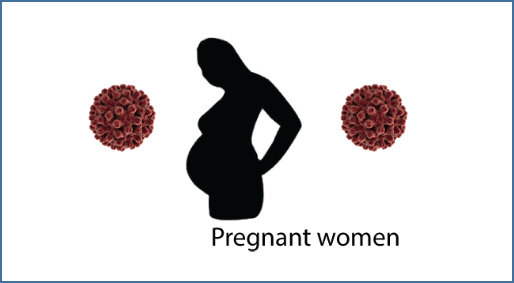Hepatitis E is geographically a very heterogeneously distributed disease, being present in both developed and developing countries. Hepatitis E virus (HEV) transmission is essentially by the fecal–oral route, causing generally asymptomatic infection [1, 2]. The zoonotic transmission of HEV is linked to ingestion of raw shellfish and undercooked pork meat [5–6]. To some extent, cases of mother-to-child transmission have also been reported [3–4]. Most infections are self-limited acute hepatitis in immunocompetent subjects. However, it can become severe with very high mortality rates in specific population groups, including pregnant women and immunosuppressed people [7–8].
In Senegal, as in several countries in sub-Saharan Africa, the epidemiology of hepatitis E is weakly documented. This situation contrasts with the localized epidemics of hepatitis E and sporadic cases recorded throughout these last ten years. Indeed, in 2014, in the gold-bearing region of Kédougou located in the south-east of Senegal, nineteen cases of death and hundreds of HEV infected individuals have been reported by local health authorities [9]. Since then, very little data on hepatitis E were released at the national level. In addition, data from the scientific literature report an increased vulnerability of pregnant women to hepatitis E infection with mortality rates ranging from 15-25% against 0.5-4% in the general population.
A recent multicentric socio-demographic and seroepidemiological survey of HEV led by Dr Abou Abdallah M. Diouara and Dr Ahidjo Ayouba was conducted among pregnant women attending antenatal clinics in Senegal. This study aimed to assess the exposure of pregnant women to HEV and the associated risk factors. Out of a total of 1,227 participants recruited from 4 geographic regions over the period of 5 months, from March to July 2021. The overall HEV seroprevalence was 7.8%, with 0.5% and 7.4% for HEV IgM and HEV IgG respectively. From one locality to another, the seroprevalence of HEV antibodies varied from 0 to 1% for HEV IgM and from 1.5 to 10.5% for HEV IgG. These results confirm the circulation of HEV in Senegal, due to previous exposures and recent or ongoing infections detected. The data also showed that seroprevalence varied significantly by marital status (p < 0.0001), by the regularity of income (p = 0.0043), and by access to sanitation services (p = 0.0006). Non-compliance with individual and collective hygiene measures could contribute to the spread of HEV, particularly in an epidemic context. In addition, exposure to livestock animals or natural disasters such as recurring flooding; could exacerbate the spread of the virus within communities. Indeed, during flooding events, rainwater very easily mixes with wastewater escaping from individual sanitation systems and/or drainage networks. There is therefore a need for awareness-raising on several levels. In such a context, we believe that one of the strategies to prevent HEV infection would initially consist to address targeted awareness messages to the population groups most vulnerable to hepatitis E.
Moreover, during this study we found that unlike other hepatitis virus diseases (A, B, C and D), hepatitis E is unknown to populations and sometimes even to staff providing health care. Therefore, we believe that this awareness should be extended to healthcare workers in order to facilitate the management of clinical cases.
The results of this study conducted among pregnant women could serve as a reference situation for the implementation of national prevention strategies focused on socio-cultural, environmental and behavioral aspects for better management of HEV infection in Senegal.
Read the full article (Viruses. 2022 Aug 9;14(8):1742): DOI: 10.3390/v14081742
References:
- Bradley, D.W. Hepatitis E virus: A brief review of the biology, molecular virology, and immunology of a novel virus. J. Hepatol. 1995, 22 (Suppl. 1), 140–145.
- Rein, D.B.; Stevens, G.A.; Theaker, J.; Wittenborn, J.S.;Wiersma, S.T. The global burden of hepatitis E virus genotypes 1 and 2 in 2005. Hepatology 2012, 55, 988–997.
- Sharma, S.; Kumar, A.; Kar, P.; Agarwal, S.; Ramji, S.; Husain, S.A.; Sharma, P. Risk factors for vertical transmission of hepatitis E virus infection. J. Viral Hepat. 2017, 24, 1067–1075.
- Khuroo, M.S.; Kamili, S.; Jameel, S. Vertical transmission of hepatitis E virus. Lancet 1995, 345, 1025–1026.
- Riveiro-Barciela, M.; Minguez, B.; Girones, R.; Rodriguez-Frias, F.; Quer, J.; Buti, M. Phylogenetic demonstration of hepatitis E infection transmitted by pork meat ingestion. J. Clin. Gastroenterol. 2015, 49, 165–168.
- Namsai, A.; Louisirirotchanakul, S.; Wongchinda, N.; Siripanyaphinyo, U.; Virulhakul, P.; Puthavathana, P.; Gannarong, M.; Ittapong, R. Surveillance of hepatitis A and E viruses contamination in shellfish in Thailand. Lett. Appl. Microbiol. 2011, 53, 608–613.
- Aggarwal, R. Hepatitis E: Historical, contemporary and future perspectives. J. Gastroenterol. Hepatol. 2011, 26 (Suppl. 1), 72–82.
- Caron, M.; Bouscaillou, J.; Kazanji, M. Acute risk for hepatitis E virus infection among HIV-1-positive pregnant women in central Africa. Virol. J. 2012, 9, 254.
- Sadio, B. [Study of seroprevalence in an epidemic context of the hepatitis E virus in the region of Kédougou]. Master’s Thesis, Faculté de Médecine, de Pharmacie et d’Odontologie de l’Université Cheikh Anta DIOP, Dakar, Sénégal, 2016. Available online: http://bibnum.ucad.sn/viewer.php?c=mmoires&d=memm%5f2016%5f0193 (accessed on 04 September 2022).

